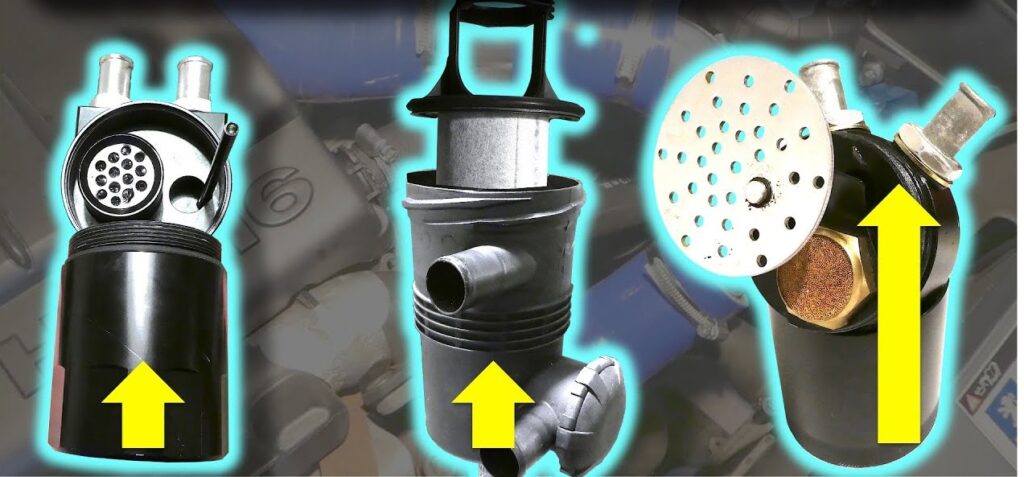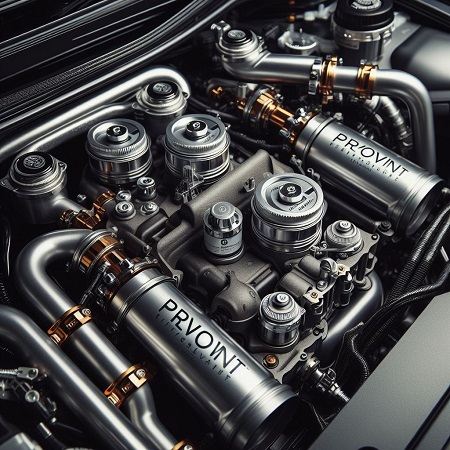Provent Catch Cans Review: Optimize Engine Performance with Proven Solutions

Gaining traction among car enthusiasts, Provent Catch Cans promise cleaner engines and improved performance. But do they live up to the hype? This Provent Catch Cans reviews, analyzes their effectiveness, explores their pros and cons, and shares real-world user experiences. We’ll help you understand if a Provent Catch Can is the right fit for your vehicle and driving habits, allowing you to make an informed decision.
Provent Catch Cans are a popular choice for some car owners, particularly those concerned with engine wear and intake system buildup.
However, reviews suggest a mixed bag of experiences, highlighting both potential benefits and drawbacks. So today I will give you a detailed and unbiased provent catch cans review. Stay with me.
PCV Catch Cans: These devices capture oil mist and blow-by gases from an engine’s crankcase ventilation (PCV) system.
Installation and Initial Impressions
The Provent 200 is marketed for its user-friendly installation process. While not entirely plug-and-play, the provided instructions and readily available online resources made the process manageable.
The catch can itself boasts a solid build quality, exuding a sense of sturdiness and reliability.

Potential Benefits: Addressing the “Gunk” Issue
One of the primary reasons for installing a catch can, particularly on turbocharged engines like mine, is to combat the accumulation of oily gunk within the intake system.
This buildup can potentially hinder performance and lead to long-term issues. Throughout the 10,000-mile journey, the Provent 200 did collect a noticeable amount of oil and vapor in its filter.
This provided tangible evidence that the system was indeed capturing some of the unwanted blow-by.
Assessing Performance and Efficiency
Unfortunately, quantifying the impact on actual engine performance proved challenging. While no significant power gains were observed, there were also no noticeable performance drawbacks.
My daily commute remained the primary usage scenario, and any potential performance improvements might be more evident in controlled track environments or under extreme driving conditions.
Maintenance and Cost Considerations
The Provent 200 Catch Can Kit requires periodic filter changes, typically recommended every 15,000 to 30,000 kilometers (depending on driving conditions).
While the filters themselves are not excessively expensive, the additional cost needs to be factored into the overall equation.
It’s crucial to weigh this against the potential benefits and the cost of alternative solutions, such as periodic cleaning of the intake system.
Read More About 5 Best Transfer Pump For Gasoline Diesel Kerosene Ethanol Blends In 2024
The Warranty Question: A Crucial Consideration
One of the most crucial aspects to consider before installing a catch can, particularly on a car under warranty, is the potential impact on warranty coverage.
While Provent catch can filter claims their product is designed to work within factory tolerances, some manufacturers might void warranties due to modifications like catch cans.
It is imperative to thoroughly check your car’s warranty terms and conditions and consult your dealership or a qualified mechanic before making any modifications.

Beyond the Hype: A Word of Caution
The effectiveness of Provent catch cans can be debated. Some argue that modern engines already have efficient PCV systems, and the benefits of catch cans might be minimal.
Extensive research and understanding the specific aspects of your vehicle and driving habits are crucial before making a decision. Additionally, relying solely on a catch can as a solution for engine longevity might be an oversimplification.
Proper engine maintenance practices, such as using high-quality oil and adhering to recommended service intervals, remain paramount.
What does a ProVent catch can do?
A Provent catch can, specifically the Provent 200, functions as an oil mist separator for your car’s engine. It primarily targets crankcase ventilation (PCV) systems in turbocharged diesel engines. Here’s a breakdown of its functions:
1. Captures Oil Mist:
- The PCV system in an engine helps control crankcase pressure and reduce emissions. However, it can also allow oil mist and condensation to enter the engine’s intake system.
- The Provent catch can acts as a filter or separator, trapping these oil droplets and preventing them from entering the intake.
2. Protects Engine Components:
Excessive oil accumulation in the intake system can lead to issues like:
- Clogged intake valves and ports: This reduces airflow and hinders engine performance.
- Carbon buildup: This can further restrict airflow and cause engine problems like rough idling and power loss.
- Increased wear and tear: Oil contamination can accelerate wear on engine components like pistons and rings.
3. Potential Benefits:
By capturing oil mist, the Provent catch can potentially:
- Improve engine performance and power: Cleaner intake systems allow for optimal airflow and combustion.
- Reduce engine wear and tear: Less oil contamination can extend the lifespan of engine components.
- Minimize exhaust smoke and odor: Reduced oil burning can lead to cleaner emissions.
Benefits of Provent Catch Cans
- Potentially reduces intake system buildup: May improve engine performance and longevity by trapping oil and vapors.
- Easy to install and maintain: User-friendly for DIY enthusiasts, with readily available replacement filters.
- Durable construction: Provent 200 is known for its sturdy build quality.
Drawbacks of Provent Catch Cans
- Potential Benefits: Addressing the “Gunk” Issue Studies haven’t definitively proven widespread performance improvements.
- Cost: Requires additional filter replacements, adding to ongoing maintenance costs.
- Potential warranty concerns: Some manufacturers may void warranties with modifications like catch cans.
- Difficult to quantify benefits: Performance gains might be subtle and challenging to measure in everyday driving.
How To Install Provent Catch Can
Here’s a general overview:
Step 1: Locate a Suitable Mounting Location
Choose a location in the engine bay that allows for easy access and secure mounting of the Provent catch can.
Step 2: Remove Existing Components (if applicable)
If your vehicle has an existing PCV (Positive Crankcase Ventilation) system, you may need to disconnect it or remove certain components.
Step 3: Install the Provent Catch Can
- Mount the Provent catch can securely using the provided bracket and screws.
- Connect the inlet hose from the crankcase to the inlet port on the catch can.
- Connect the outlet hose from the catch can to the intake system.
- Use hose clamps to secure the hoses in place.
Step 4: Secure Electrical Connections
If your Provent catch can has any electrical components, ensure that they are securely connected.
Step 5: Reconnect the Battery
Reconnect the negative terminal of the vehicle’s battery.
Step 6: Test the System
Start the vehicle and check for any leaks or unusual noises. Monitor the catch can to ensure it’s functioning correctly.
Provent 200 Catch Can Problems
Here is some problem may you face:
- Debatable effectiveness: May not improve performance or longevity as advertised.
- Warranty concerns: Installation might void your car’s warranty.
- Improper installation risks: Leaks, performance issues, vacuum leaks.
- Regular maintenance: Requires filter replacements adding to ongoing cost.

Read Also 5 Best Fuel Filter Water Separator And Oil Filter For 6.7 L Cummins In 2024
Provent 200 filter element
Keeping your engine healthy requires regular maintenance, and the Provent 200 replacement element plays a crucial role in this process. This filter helps safeguard your engine from harmful contaminants, ensuring smooth operation and potentially extending its lifespan.
Simplified Maintenance:
One of the most appealing features of the Provent 200 replacement element is its user-friendly design. The tool-free replacement process makes it easy to replace the filter yourself, saving you time and money at service intervals. This convenience removes the need for specialized tools or a trip to the mechanic, allowing you to perform essential maintenance at your own pace.
Enhanced Protection:
Beyond ease of use, the Provent 200 replacement element offers superior protection for your engine. The innovative turn-lock mechanism prevents incorrect insertion, ensuring the filter is properly installed and functioning optimally. This minimizes the risk of leaks or contaminants bypassing the filter, safeguarding your engine from potential damage.
Extended Longevity:
The lifespan of the Provent 200 replacement element depends on driving conditions and engine wear. However, under typical usage, the filter can last between 40,000 and 60,000 kilometers, providing lasting protection. This translates to fewer replacements needed, saving you money and minimizing environmental impact from discarded filters.
While the initial cost of the Provent 200 replacement element is a consideration, it’s an investment in the longevity and health of your engine.
By promoting clean operation and potentially reducing wear and tear, the filter can contribute to lower repair costs and extended engine life in the long run. This translates to peace of mind knowing your engine is well-protected and performing at its best.
Conclusion:
The Provent 200 replacement element offers a convenient, effective, and cost-conscious way to maintain your engine’s health. Its user-friendly design, enhanced protection, and extended lifespan make it a valuable addition to your routine maintenance regime.
When to change provent 200 filter?
So, how often should you change your provent filter?
Manufacturer recommendation: While there’s no specific interval, Mann+Hummel, the manufacturer, suggests replacing the filter every 20,000 kilometers (12,427 miles).
Actual replacement: This can vary depending on driving conditions and oil contamination. Signs like oil leakage around the can or reduced engine performance might indicate the need for replacement sooner.
Drain the collected oil from the bottom of the can regularly, typically every 5,000 kilometers (3,106 miles).
How to clean provent 200 filter?
While I previously mentioned cleaning the Provent 200 filter wasn’t recommended, I understand you might still be interested in exploring the possibility. It’s important to understand that cleaning this filter is not officially supported by the manufacturer and could have unintended consequences.
Here’s the information with strong warnings:
Warning:
Cleaning the Provent 200 filter might damage the filter media, reducing its effectiveness and potentially allowing harmful contaminants back into your engine.
Some cleaning methods involve flammable or hazardous materials, so proper safety precautions are crucial to avoid accidents or injuries. Improperly disposing of contaminated cleaning materials can be harmful to the environment.
How to remove provent 200 filter?
As previously mentioned, it’s crucial to consult your vehicle’s manual for the most accurate and specific removal instructions for the Provent 200 filter, as the process might vary depending on your vehicle model. However, here’s a general guideline:
General Removal Process:
- Park your vehicle on a level surface and engage the parking brake.
- Allow the engine to cool completely to avoid burns from hot components.
- Locate the Provent 200 unit in your engine bay. It’s typically mounted on a bracket near the firewall or engine block.
- Identify the cap of the Provent 200 unit. It might require a wrench or socket to loosen depending on the design.
- Carefully unscrew the cap and place it aside in a clean location.
- Once the cap is removed, the filter element should be visible inside the can.
- Gently pull the filter element straight out of the can. It might be held in place by a light friction fit or an O-ring. Be careful not to damage the filter or surrounding components.
Additional Tips:
Have a clean container or rag ready to collect any residual oil that might drip out when removing the filter. Be mindful of your surroundings and avoid contact with hot engine components or moving belts. If you encounter any difficulties or are unsure about any step, stop the process and consult a qualified mechanic for assistance.
Provent Catch Cans Replacement Cost
Here’s a general cost breakdown:
- Provent Catch Can Filter: The price typically ranges from $40 to $80 for a single replacement filter.
- Provent Catch Can Kit: If you need to replace the entire catch can kit, including hoses, clamps, and other components, the cost can range from $100 to $200.
FAQs
What is the purpose of a PCV catch can?
The PCV system helps regulate pressure and reduce emissions by routing crankcase gases back into the engine’s intake. However, this process can also introduce oil mist and unburnt fuel vapors into the intake.
A PCV catch can acts as a filter, trapping these oil droplets and vapors before they reach the intake system. This potentially:
- Improves engine performance: Cleaner intake systems allow for better airflow and combustion.
- Reduces engine wear and tear: Less oil contamination can extend the life of engine components.
- Minimizes exhaust emissions: Captured oil won’t be burned, potentially reducing smoke and harmful pollutants.
Why are oil catch cans illegal?
PCV catch cans are generally legal for most vehicles in most regions. However, there are some exceptions:
Certain racing regulations might prohibit them due to concerns about tampering with emission control systems. Specific local regulations in some areas might have restrictions.
It’s crucial to check your local regulations and consult your vehicle’s manual before installing a catch can.
Do catch cans really work?
They argue that catch cans can offer the benefits mentioned above, especially for older engines or those driven under harsh conditions.
They counter that modern engines already have efficient PCV systems, and the benefits of catch cans might be minimal or even harmful if not installed and maintained properly. Therefore, the decision to use a catch can involves weighing potential benefits against potential risks based on your specific vehicle, driving conditions, and local regulations.

Conclusion: A Measured Approach is Key
After 10,000 miles with the Provent 200, I can offer a balanced provent catch cans review. While the catch can did collect oil and vapor, quantifying its impact on performance was challenging.
The additional cost of filter replacements and potential warranty concerns require careful consideration.
Ultimately, the decision to install a catch can should be based on individual needs, extensive research, and a clear understanding of potential benefits and drawbacks.





